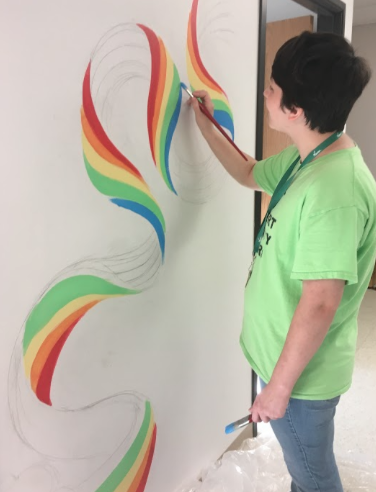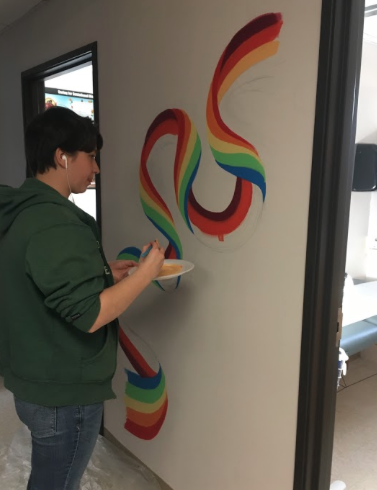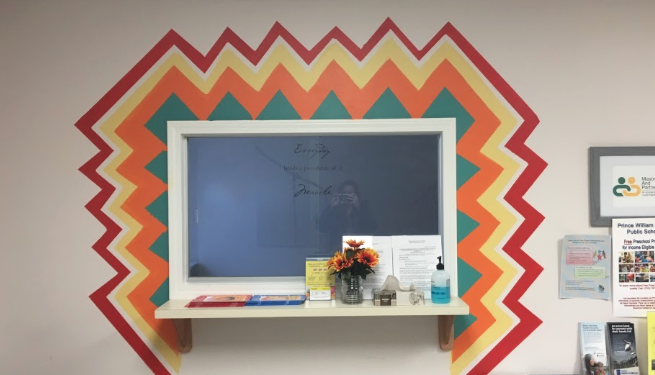MAP’s clinic helps underprivileged communities navigate through health resources
By Ahmed Farid, Staff Writer
Being able to help people in our community is something all of us want. To do this, you sometimes need to get creative and seek out opportunities to offer your help. This is what Mason freshman students Moe Lewis and Annabelle Anderson did.
Lewis and Anderson are both Mason students in the Art Department. They received an email from Nikki Brugnoli-Whipkey in the Art Department asking for volunteers to help decorate the Mason and Partners’ (MAP) clinic.
MAP’s interprofessional clinics was founded by Drs. Rebecca and Carrie Sutter. Their aim is to provide health services to uninsured and underprivileged people who live in Fairfax County and Prince William County. MAP clinics follow the Bridge Care model, meaning that they not only care for the patients but also help them find the resources they may need in the future.
The clinics are also a place where students in the health department can get some training, as the clinics operate through academic community partnerships.
“There are now seven MAP Clinics and together they have seen over 10,000 unique patients from over 100 different countries,” said Jaclyn Dunn, a sophomore at Mason who has been an intern at the clinic since last fall.
When asked why she volunteered to intern at the MAP clinics, Dunn said, “I was immediately drawn to its mission and commitment to providing services to the underserved in our communities… People have the right to adequate healthcare, shelter, food and services regardless of who they are or where they are from. This is what the MAP clinic does every day, helps advance fundamental human rights,” said Dunn.
Jaclyn enjoyed her experience so far at the MAP clinics with helping clients access resources and helping the clinic with organization and screenings. Yet, one day she noticed that the Manassas clinic had too much white space. After consulting with her supervisor, Dr. Molly Davis, she decided to change that and collaborate with the Art Department to make the clinic more welcoming.
That’s when Lewis and Anderson volunteered to decorate the MAP clinic. When they heard what MAP does they were eager to help, especially because they had the talent that MAP was looking for.
 “I hear volunteering and helping people is a good thing to do in college. I figured it would be a fun thing to add to my routine. And when I heard more about MAPS and what it was about, I thought it was the type of thing I want to help out with,” said Lewis.
“I hear volunteering and helping people is a good thing to do in college. I figured it would be a fun thing to add to my routine. And when I heard more about MAPS and what it was about, I thought it was the type of thing I want to help out with,” said Lewis.
“I’m interested in murals. I didn’t know anything about the clinic at the time but I love what it stands for,” said Anderson.
Even if you are not interested in murals like Anderson, there is still many ways to support the MAP clinics.
The clinics accept donations to help them continue providing excellent care for their patients. If you are inspired by their mission and would like to help, you can donate at https://chhs.gmu.edu/give. Click on the give link and select Mason and Partners Clinics Fund.
Photos Courtesy of MAPS



